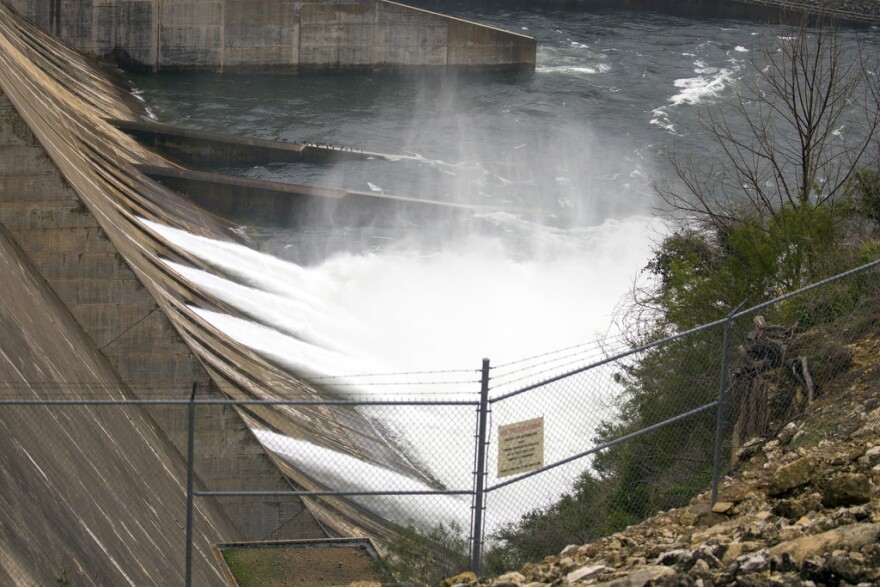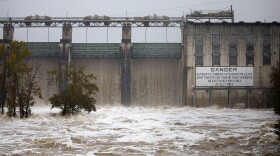As the old saying goes, “You don’t miss your water till your well runs dry.”
But rather than sit around missing your water, it may be wiser to ask some simple questions: “Why did the well run dry?” “How did the well work in the first place?”
If similar questions have crossed your mind since the City of Austin ordered people to start boiling water, you’re in luck. Here's a basic explainer on how water is treated and distributed in Austin.
Lakes That Are Rivers (And Reservoirs)
The city operates three water-treatment plants on Lake Travis and Lake Austin. These aren’t natural “lakes,” but rather dammed-up reservoirs on the Colorado River.
RELATED | Here's Why The Highland Lakes Are So Important (And Why They Aren't Really Lakes At All)
One of the main purposes of these reservoirs is to store water for Austin and other communities to treat and use. Austin operates the Davis and Ullrich treatment plants on Lake Austin and the Handcox Water Treatment Plant on Lake Travis (also known as Water Treatment Plant 4).
Each treatment plant is different, but they operate using the same general principals. Water is sucked up from the lakes through screen-protected intake pipes. The pipes are large: The screens for the Handcox pipes, for example, are 24 feet tall and 30 feet in diameter.
Water travels through those pipes to the plants for treatment.

Sedimentation, Disinfection And Filtration
The way water is made ready to drink is through processes of sedimentation, disinfection and filtration – though not necessarily in that order. Workers add coagulants to encourage small particles floating in the water to come together to form larger particles that “settle out” more quickly, says Mary Jo Kirisits, an associate professor at UT's Cockrell School of Engineering.
They also disinfect the water to kill microorganisms.
“It’s never sterilized. That’s never the goal,” Kirisits says. “We’re just trying to knock down the number of organisms in there so we can reduce the chances of people getting sick.”
The water is also passed through filters, which sound like huge versions of the filters used to clean water in fish tanks.
“It’s a granular filter media that is packed maybe 1 meter in depth,” Kirisits says. “Typically, filters are run by gravity so the water is just coming down [through the filter] by gravity.”
Distribution
Water-treatment plants are usually located at high elevations so water can take advantage of gravity to flow down into the distribution system.
The system is a network of pipes and storage tanks. The pipes start big and get smaller as they branch out into the lines that eventually bring water to individual homes. The elevated water tanks, situated around the city, serve to store treated water and maintain pressure in the system.
Austin can store about one day’s worth of water in its tanks, according to Austin Water Director Greg Meszaros.

What Happened?
The order to boil and conserve water is the result of trouble all along Austin’s treatment and distribution system. The city says it started with treatment.
In the reservoirs, the silty water churned up by flooding in Central Texas became too difficult to treat as quickly as Austinites were consuming it. The siltiness caused concerns about water quality and prompted the boil-water order.
But the slower-than-usual treatment time also meant Austin was consuming more water from its system than the treatment plants were putting in. The storage tanks started getting depleted and that caused the water system to lose pressure.
If it lost too much pressure, firefighters wouldn't be able to spray water from hoses to fight fires, and showers would stop working.
But the loss in pressure also raised further concerns about contamination.
Here's why: Along the water system there are holes and cracks. If water pressure is maintained at a 20 PSI minimum, water flows out of those openings as leaks. If pressure drops below 20 PSI, water, soil and microorganisms may start to flow in to the system.
That can create contamination past the point of water treatment.







